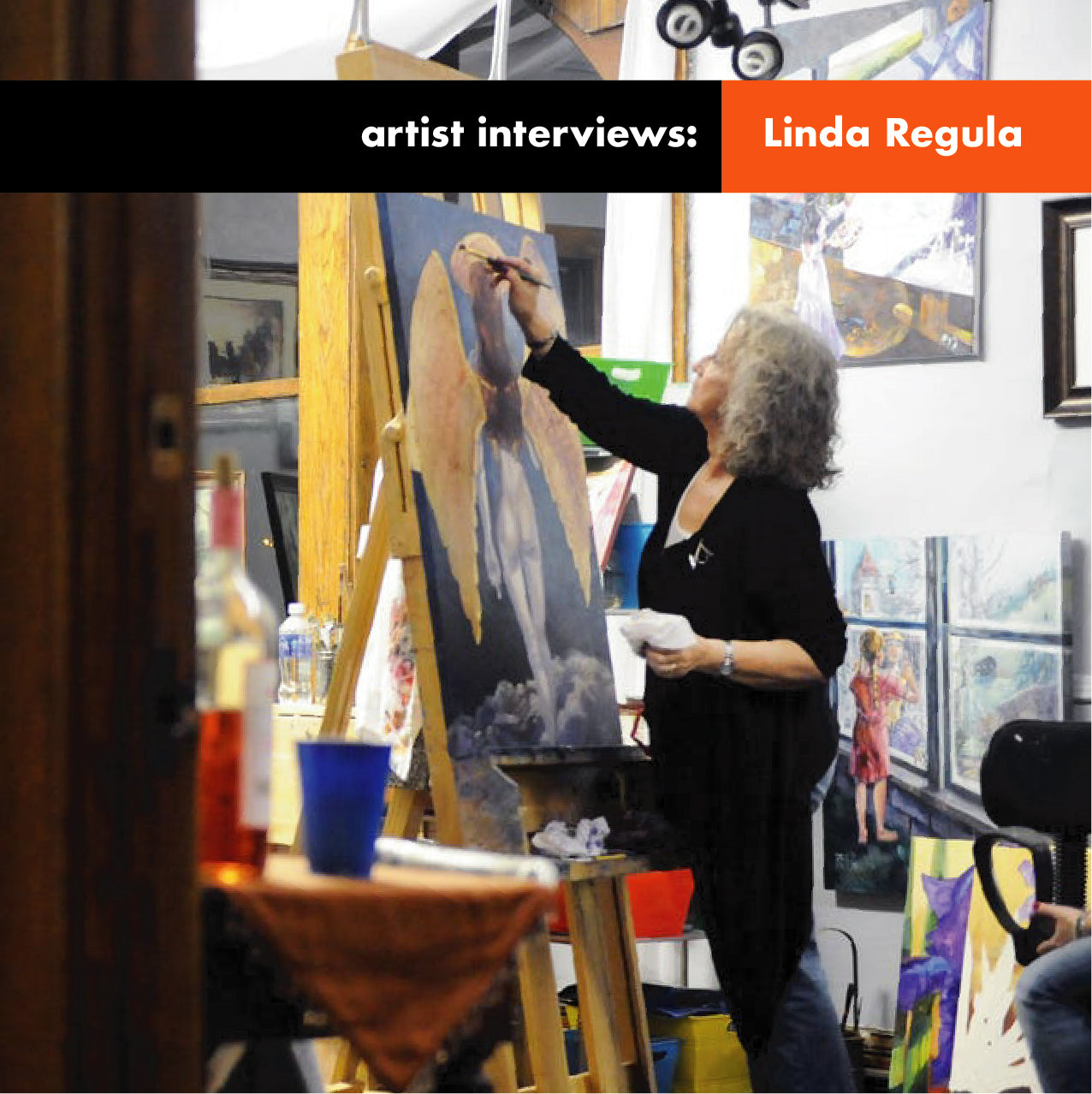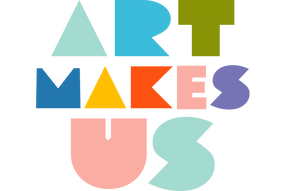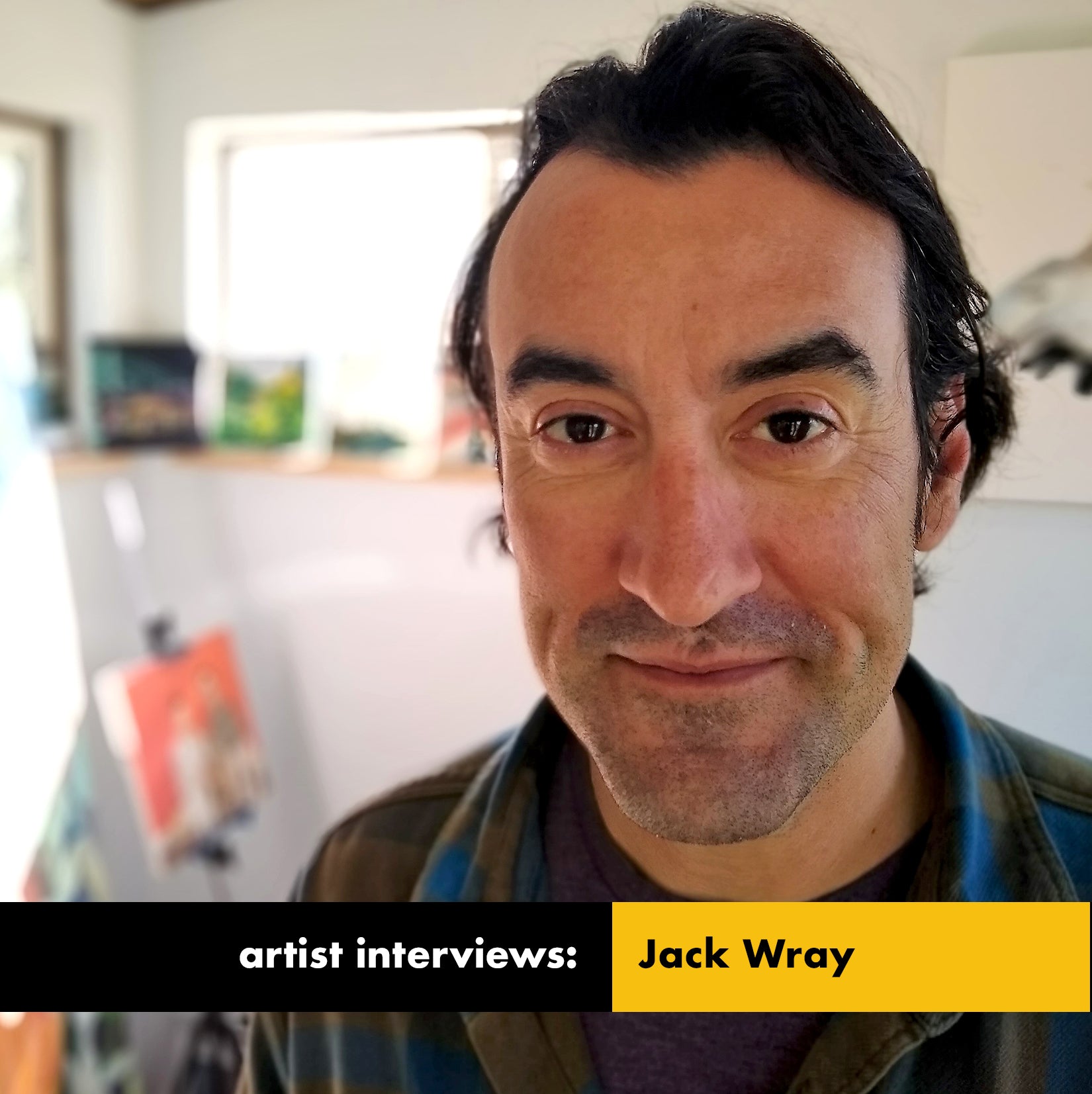Artist Interviews: Linda Regula

We are launching a new blog feature on our site called Artist Interviews, where we interview inspiring artists from our AMU community, inviting them to share their work and their stories with us.
It is only fitting to begin with someone whose passion for mentorship inspired this entire project. Linda Regula was AMU co-founder Paul Richmond's mentor growing up, and also his lifelong friend. We started making plans for Art Makes Us shortly after she passed away in June 2020 in order to continue her legacy of inspiring others to pursue their creative interests.
The following is an interview with Linda by Paul that was originally published in April, 2011 by The Artist's Interview.

I met Linda Regula in 1983 shortly before my fourth birthday. I don’t remember much else from that year, but I distinctly remember walking into her art studio and being overwhelmed by what I saw. The walls were stacked floor to ceiling with her vibrant, fantastical paintings, inviting me into an exciting new world. My parents asked Linda if she would teach me art lessons because I had an insatiable desire to draw. They had read about her in a newspaper article and hoped she would take me on as her student. Reluctant because of my age, she agreed to a trial lesson and an instant bond was formed – one that has lasted twenty-seven years. She is a true artist in every sense of the word; she’s also my biggest inspiration and lifelong friend.
Linda has been painting for thirty-one years and draws heavily upon her own life experiences to create powerful, personal images. She doesn’t shy away from difficult subject matter either, bravely sharing memories of poverty, abuse, and physical trauma while inviting viewers into the imaginative worlds she invented to cope with these painful circumstances. She is a natural storyteller (recently publishing six novels) and an active member of the arts community. When she moved from Columbus to Zanesville several years ago and saw the need for a community arts event, she initiated the Y-Bridge Arts Festival on Zanesville’s historic Y-Bridge to showcase the work of local artists. The popular event is now going into its third year.

The day I interviewed Linda for this article, she learned that she had just received the Ray Thomas Community Award from the Muskingum County Community Foundation for her work on the Y-Bridge Festival. True to form, she immediately contacted me to let me know that she would be contributing the prize money to a new anti-bullying project we are developing together.
I’m excited to introduce you to a truly inspirational, driven, creative woman who I always refer to as “my first diva,” but who actually would be better described as “my hero.”

Paul: Memories from your childhood play an important role in your work. What was your childhood like?
Linda: I was born in the mountains of West Virginia, second youngest of nine children.We lived in tar-papered shacks without electricity or running water, and moved often. Memories of my childhood always include nighttime trips to outdoor toilets, those first scary walks into new schools where I was bullied, newspaper pasted over cracks in the walls, trying to stay warm in winter, and night-time moves to another shack. My mother ran away when I was nine years old, and my father lived by the saying, “spare the rod and spoil the child.” I was ill-dressed, hungry, abused, and fearful of his escalating violence. Although a world of poverty and neglect surrounded my physical body, I was also blessed because powerful imagination allowed me to create beautiful worlds that also nurtured my soul. When I was thirteen, my older sister, Anna, who’d left school as a child and ran away from the mountains, took me to live with her family in Ohio. She offered me a chance at a better life, and all she asked in return was that I graduate from high school, something no one in my family had accomplished, and give my promise that once a diploma rested in my hand, that I would do the same for my younger sister. I don’t believe that my sister Anna and her husband Bob realize that they are largely responsible for the creative, productive life I enjoy today.

Paul: You decided to pursue a career as an artist after a traumatic injury. Could you describe that experience, and the role that painting played in your recovery?
Linda: I married out of high school, because back in the sixties, a career was not something a girl pursued since the “Cinderella” concept was still in vogue. My sixteen-year old sister came to live on the 144 acre farm where my husband and I raised two children. In 1976, I climbed into the upper loft of our four-storied dairy barn to help stack hay bales. I fell forty feet onto an oak floor, then my legs slammed into a huge beam. I spent the next 22 months bedridden, in casts, then in a wheelchair, and finally on crutches recovering from those near fatal injuries. I once again revisited those fantastic worlds of imagination that had sheltered me during the early years of childhood. Inspired by a friend to become a painter to help pass the long immobile hours (and to stop feeling sorry for myself), I began painting on an overhead easel my husband built over my hospital bed. From the first streak of purple paint smeared across a white canvas, I was hooked, and even though my body remained in traction and my legs encased in plaster, my mind freely roamed all those wonderful places where my imaginary childhood friend, Princess Twilight, and I shared so many fantastic adventures. Today, those remembered images are still subject matter for many of my oil paintings and the books I write.

Paul: Some of my favorite Linda Regula paintings are the ones that delve into pretty dark/disturbing territory. Somehow, even when tackling difficult themes like abuse, abandonment, and body image, you still create vibrant, beautiful imagery. How did your work evolve to include such personal themes, and what is your process for developing your work?
Linda: Divorced after eighteen years of marriage, I relocated to Columbus, Ohio, remarried and opened an art gallery in Worthington. At that time I was still creating and exhibiting paintings that depicted the remembered fantasy worlds of childhood imagination, but following a critic’s negative review in which she accused me of being afraid to tackle serious subject matter, I decided to take her up on her challenge. Instead of letting her catty words become a reason to doubt my talent, I began painting like a mad woman. At first, it was difficult to walk that thin line between portraying, in vivid detail, unpleasant subjects, and creating an intriguing work of art that could carry my visual messages. As to the process, it’s difficult to explain. A recalled memory, or thinking about an issue adversely affecting women and children, seems to drop a detailed image into my mind where it waits patiently, as wanting me to tell a story; I just pick up a brush and let it copy the completed story onto canvas.

Paul: Besides painting, you’ve also worked in a number of galleries and arts organizations. You also dreamed up the Y-Bridge Arts festival in Zanesville. How has being a part of the arts community enriched your career?
Linda: I’ve promoted the arts for nearly thirty-five years, and after retiring as a museum curator, I relocated to Zanesville, OH, opened an art studio with my husband, and came up with an idea to bring attention to the growing arts community in my adopted hometown. Three years ago, I persuaded our Mayor, County Commissioners, and ODOT to let me shut down our historic Y-bridge to create a two-day art festival that not only spotlights hundreds of artists on the bridge but also performance artists, craft demonstrators, and an Arts & Learning Area where children experience the joy of creating art, as well as learning about our unique bridge and historic city.

Paul: As someone whose life was forever changed by having you as a mentor, I’m curious to know what made you decide to start teaching. What is your philosophy of teaching art to young people?
Linda: What can I say? I’d taught art to adult students for years, then one day a golden-haired tyke, just shy of his fourth birthday, appeared on my doorstep.Your blue eyes were so curious, so full of possibilities. I guess staring into them, I wondered what my early childhood might have been like had a mentor stepped forward; not only to teach me how to create beauty to express my feelings, but also to love me. My philosophy to teach such an intricate skill as oil painting to a child is simple. One must be willing to see the world through their eyes, not through adult ones jaded by experiences and disappointments. One must be willing to get down on the floor, to encourage them to talk and draw and paint those things that only a child fully appreciates; strengthen their awesome ability to use imagination by requesting the child make up outrageous stories, then relate these both vocally and visually. I guess loving each child for the special individuals they are and encouraging them to do what they do best - PLAY - is the real key to unlocking a child’s mind. Then, knowledge just sneaks in.

Paul: No matter what else was going on in my life, I’ve always known that I had you in my corner rooting for me and pushing me to aim higher. I’ll never be able to thank you enough. Do you have any favorite stories from our adventures together through the years?
Linda: Are you kidding? I remember the first time I opened my door and you stood there, arm outstretched with a red apple resting in the palm of your tiny hand. “This is for you, my pretty,” you lisped through a wide smile, and I immediately sensed that you were eagerly anticipating my reaction. I asked if it was poison, then after hearing your giggling “no,” I hesitantly took a bite, then slowly sank to the floor, the back of my hand pressed against my forehead in a swoon so dramatic that Snow White would have been very proud (and which, of course, delighted my “golden child”). Each class until you were in elementary school, we had to play out this scene, with slight variations, before you could settle down and begin your lesson. I’ve got dozens of these stories, and tell many of them in my novel “A Heart Wants What It Wants” which is the fictionalized version of our teacher/mentor relationship and friendship that stretches across twenty-seven wonderful years.

Paul: I always say you were my first diva inspiration. Are there any role models (diva or otherwise) who have inspired you?
Linda: You inspire me, Paul! How you live such a creative, caring life, and your drive to make a difference pushes me to speak out, both vocally and visually, to do what I can to help, and perhaps inspire others to become creative and productive despite terrible memories of childhoods filled with abuse, neglect, and violence. I try to instill in the children I mentor that diversity and hardship can be used as powerful motivation to make choices to enrich their lives, rather than justification for making destructive and self-abasing ones. You and I are proof positive that this is possible.
Paul: You’re passionate about the issue of bullying and have recently created a poster called “Sticks and Stones” to raise awareness about it. What made you take up this cause, and how have your efforts been received?
Linda: Being poor, skinny, motherless, and very shy, I was bullied unmercifully as a child. As a matter of fact, the first picture I remember drawing was a colorful phoenix rising from ashes. My fourth-grade teacher chose it to display in her “honor place,” but while she was out of the room, a bully grabbed it, ripped it up, and threw it into the air like confetti. I don’t remember drawing again until adulthood, so I know how deeply being bullied, especially when one’s home life is also horrendous, can affect a child. Paul, as you grew up, we often talked about kids bullying you at school, calling you ugly names, and discussed ways to keep those ugly words from stealing your humanity, and ways of thinking that stopped bullies’ cruelty from changing the wonderfully creative individual that we both knew you were. I recently submitted the poster that you and I created to a county-wide organization that receives tax dollars to address this issue in schools. It was rejected because board members thought “it was too bold,” “they didn’t like the ugly words on it,” “and didn’t want to offend anyone.” I was stunned at how out of touch these and other adults are to today’s technology-savvy youth, and their ignorance of the mental damage these vicious bullies inflict on vulnerable victims. While board members, educators, and administrators tiptoe around this horrific issue, searching for pretty pictures and pretty words that won’t offend anyone, our children are suffering. Our children are dying.

Paul: You’re usually juggling a million projects, and I so admire your drive and dedication. What are you working on now?
Linda: Having published six books, I’m more than half way through my seventh novel. Oh, by the way, Paul, I recently finished a painting (above right) and it awaits your magic design touch to transform it into another eye-catching book cover like my others. I also brushed my signature to another canvas, titled “House of Broken Things” that rips down walls behind which abusers find hiding places. I recently submitted a grant for the anti-bullying “You Will Rise Project” that you and I are working on. This morning, I selected and assigned booths for nearly one hundred visual artists who will be on our bridge during the arts festival in August. I’m also working on having downtown Zanesville declared an Arts Overlay District, and am currently designing May’s issue of the Artist Colony of Zanesville newsletter to promote our First Friday Art Walk downtown...and...well, I’ll stop here because, like my “golden child,” I’m the happiest when I’m the busiest!


